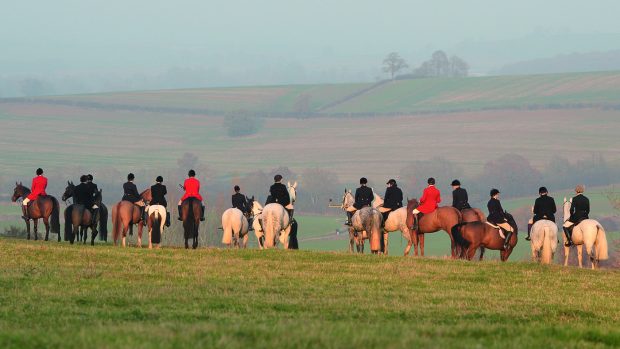The unique appeal of the bloodhound dog breed lies in its extraordinary scenting abilities and distinctive physical characteristics. Nicknamed the “sleuth hound”, they are renowned for possessing the keenest sense of smell among all dog breeds. Bloodhounds are often employed in tracking and search-and-rescue operations. It is the only breed whose evidence is admissible in court to match crime scene findings to criminals. They’re also used in drag hunting or “hunting the clean boot”.
Their long, droopy ears and loose, wrinkled skin give them a striking appearance, while their soulful, expressive eyes add to their charm. Despite their somewhat solemn demeanour, bloodhounds are known for their gentle and friendly nature. They have a naturally docile, patient and loyal temperament.
The historical and cultural significance of the bloodhound adds to its allure. The breed’s lineage can be traced back centuries, and its use in tracking and trailing has been well-documented throughout history. This rich heritage, combined with the bloodhound’s versatility whether as a working dog or a devoted companion, attracts those who appreciate a breed with a storied past, unwavering loyalty, and an exceptional aptitude for scent detection. While most of us aren’t involved in gathering crime scene evidence or search-and-rescue, for those who have these marvellous hounds in their home, you can join in with bloodhound working trials for those who enjoy a challenge and want to let their bloodhound’s talent shine.

A pack of bloodhounds being used for trail-hunting
Bloodhound dog breed: fact file
Size: large
Daily exercise: more than two hours a day
Coat: short, shedding
Colours: black and tan, liver, liver and tan, red. Dark brown or hazel eyes.
Lifespan: less than 10 years
Bark: loud and vocal
History: the breed has been developed in Britain since the 12th century, and its origins may go back even earlier to the St Hubert monastery in Belgium. The bloodhound was originally used to hunt deer and wild boar, but also in tracking humans, to chase thieves and raiders in the middle ages. Bloodhounds were used to prevent the St Hubert breed on the Continent from going extinct, and they are now considered to be the same breed.
Distinctive features: long, substantial, yet narrow, the bloodhound has a noble and dignified appearance, with a long, narrow head and a solemn, wise and powerful expression. Loose skin, powerful and strong physique with swinging movement. Long, soft ears falling in elegant folds.
Temperament: affectionate, reserved and sensitive, never aggressive either to humans or other dogs. They may look lazy with their droopy ears and saggy skin, but they are full of energy and stamina and love the outdoors.
Things to consider: in common with other large, deep-chested dogs, bloodhounds can experience the potentially fatal condition of bloat (gastric dilatation-volvulus), when the stomach twists.
Their long ears need to be checked frequently for any signs of infection, as well as the wrinkles on their body daily.
They are indiscriminate eaters, so find out what foods are harmful to dogs and be careful to hide away anything that is inappropriate or toxic. Remember how tall they are, and therefore their reach once on their hindlegs.
They tend to drool, which is off-putting for some potential dog owners.
As they are a substantial dog, one of the best large breed puppy foods is advisable, and – of course – they’ll need one of the best beds for large dogs.
Training: as a brilliant, independent and determined working scent hound, bloodhounds need professional and consistent training to bring out the best in them. Remember that they have been bred to be a working dog, and need plenty of exercise and stimulation or they can develop destructive habits and love to help themselves to things to eat.

Complete Guide to Bloodhounds | Amazon.co.uk
Owning this breed can come with its own set of joys and frustrations, and this definitive guide will let you know you’re not alone. It covers everything you could possibly need to know about bloodhounds.

Wisdom Panel DNA collection kit | Amazon.co.uk
Find out what breed your dog is with this kit that gives you everything you need to collect your dogs DNA and send it off. Includes a pre-paid envelope if you’re in the UK.
You may also enjoy reading…

Did you know: a hound is a dog, but not all dogs are hounds

Stretch and snooze: the best beds for large dogs

Meet 7 of the largest dog breeds on the planet

Best dog training leads to teach your pup obedience, heel work and recall

Treats with benefits: chews for dogs that need joint support

Subscribe to Horse & Hound magazine today – and enjoy unlimited website access all year round
Horse & Hound magazine, out every Thursday, is packed with all the latest news and reports, as well as interviews, specials, nostalgia, vet and training advice. Find how you can enjoy the magazine delivered to your door every week, plus options to upgrade your subscription to access our online service that brings you breaking news and reports as well as other benefits.




